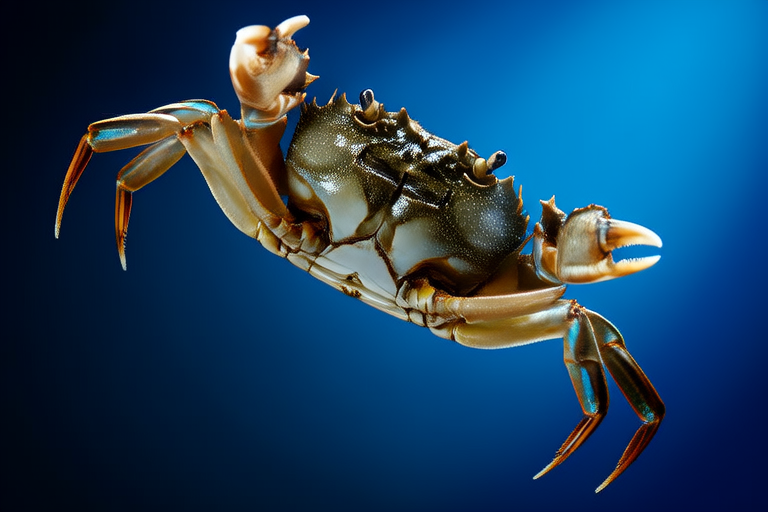Pea Crabs: Tiny Marvels of the Marine World
Welcome to the fascinating world of pea crabs! These minuscule crustaceans, named for their resemblance to peas, are a captivating subject in marine biology. Their unique characteristics, habitats, and lifecycles offer a window into the microscopic world of the ocean. Pea crabs, belonging to the family Pinnotheridae, have intrigued scientists and nature enthusiasts alike with their intricate symbiotic relationships and remarkable adaptations.
The Microscopic World of Pea Crabs
Pea crabs are tiny creatures, typically measuring between 3 to 10 millimeters in length. They inhabit a wide range of marine environments, from shallow coastal waters to deep-sea ecosystems. These crabs are often found within the bodies of larger marine organisms, where they live as parasites or commensals. Their small size allows them to thrive in these confined spaces, making them a perfect fit for their hosts.
Their microscopic world is one of intricate detail and complex interactions. Pea crabs are well-adapted to their host’s internal environment, with flattened bodies that allow them to move easily within the confines of their host. Their legs are modified for grasping onto the host’s tissues, ensuring they remain securely in place. The crabs’ exoskeletons are thin and flexible, allowing them to adjust to the shape of their host.
Symbiotic Relationships
Pea crabs are known for their symbiotic relationships with various marine organisms. One of the most notable partnerships is with sea cucumbers. These echinoderms provide a safe haven for the crabs, who reside inside their body cavities. In return, the crabs consume detritus and microorganisms that enter the sea cucumber’s digestive system, aiding in its cleaning process. This mutualistic relationship benefits both parties, with the sea cucumber receiving cleaner internal organs and the pea crab obtaining a reliable food source.
Another significant symbiotic relationship exists between pea crabs and barnacles. Some species of pea crabs live within the mantle cavity of barnacles, benefiting from the protection provided by the barnacle’s hard shell. In exchange, the crabs consume the plankton trapped by the barnacle’s feeding appendages. This relationship highlights the interconnectedness of marine life and demonstrates how different organisms can coexist harmoniously.
Recent Scientific Discoveries
Recent studies have shed light on the behavior and adaptation strategies of pea crabs. Scientists have discovered that these crabs exhibit remarkable flexibility in their diet, adapting to the available resources within their host. For instance, pea crabs living in sea cucumbers primarily feed on detritus and microorganisms, while those residing in barnacles consume plankton. This dietary adaptability allows pea crabs to thrive in diverse environments.
Research has also revealed the complexity of pea crab reproduction. Female pea crabs lay eggs within the body of their host, where they are protected until hatching. The larvae then leave the host to find new ones, completing the cycle. This reproductive strategy ensures the survival of the species by providing a safe environment for the developing young.
Diet and Role in the Ecosystem
Pea crabs are opportunistic feeders, consuming a variety of organic matter within their hosts. Their diet primarily consists of detritus, microorganisms, and plankton. By feeding on these materials, pea crabs play a crucial role in maintaining the balance of their host’s internal environment. They help in the decomposition of organic matter, contributing to nutrient cycling within the marine ecosystem.
In addition to their role as decomposers, pea crabs serve as prey for larger marine organisms. Their presence within their hosts can attract predators, leading to a cascade of interactions within the ecosystem. This underscores the importance of pea crabs in the broader marine food web.
Implications of Environmental Changes
The delicate balance of pea crab populations can be affected by environmental changes, such as climate change and pollution. Rising sea temperatures and ocean acidification may impact the availability of suitable hosts and alter the distribution of pea crabs. Pollution, particularly plastic waste, can introduce harmful substances into the marine environment, potentially affecting pea crabs and their hosts.
To ensure the continued existence of pea crabs and their important role in marine ecosystems, it is crucial to address these environmental challenges. Conservation efforts, including reducing carbon emissions and minimizing pollution, can help protect these tiny marvels of the marine world.
Pea crabs are a testament to the wonders of marine biodiversity and the intricate relationships that exist within the ocean. Their unique characteristics, symbiotic relationships, and adaptability make them a fascinating subject of study. By understanding and protecting these tiny creatures, we can contribute to the health and resilience of our oceans.
